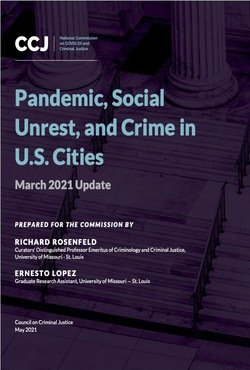By Thomas Hogan
History drives prosecutors and police. It may be time for prosecutors and police to drive history. There are four pillars of violent crime prevention that criminal justice actors can rely on to halt the current spike in homicides in America.Prosecutors and police are shaped by their times. After the discipline imposed by fighting in World War II and the orderliness of the 1950s, the American criminal justice system became less punitive in the 1960s, fueled by notions of flower power and the opinions of the Warren Supreme Court.[1] A great American crime wave followed, cresting with the extreme violence of the crack epidemic in the 1980s and early 1990s. American prosecutors, police, and politicians responded by pulling every lever available to them, desperate to restore order to increasingly dangerous cities. Prosecutors sought strict sentences. More police officers were deployed to the streets. Sophisticated computer programs were used to track crime. Mandatory minimum sentences and sentencing guidelines were imposed to constrain the discretion of judges. The strategies eventually worked—although nobody is sure exactly which responses worked and to what extent—leading to what became known as the great American crime decline. Crime rates fell for decades and even once-violent cities like New York became relatively safe, accompanied by persistent arguments that the U.S. incarcerated too many people to ensure this safety.In reaction to the illusion of a permanent victory over violent crime and the perception of over-incarceration, a new breed of prosecutors arrived on the American political scene in the 2010s, elected in liberal-leaning big cities. Called “progressive prosecutors,” these law-enforcement officials began to pull every lever in the opposite direction from that of their 1990s colleagues. They refused to prosecute entire categories of crimes, sought lesser sentences even for violent offenders, and viewed the police with open suspicion. ….Not surprisingly, violent crime began to rise again. The U.S. saw almost a 30% rise in homicides across the nation in 2020, a record for a one-year increase.[3] In 2021, homicides continued to climb, and many cities experienced the largest number of homicides in their history.[4] And even after courts reopened following the Covid era, cities as different as Portland, Milwaukee, and Albuquerque set new homicide records in 2022.There are vigorous debates about what caused this spike in homicides. Progressive prosecutors, de-policing, the Covid-19 pandemic, increased gun sales, violent protests, weakened pretrial detention and sentencing, and numerous other theories have been proposed by academics and law-enforcement professionals.
New York: The Manhattan Institute, 2023. 20p.





















